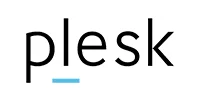Hosting services with real-time fast performance?

6 Best YouTube Keyword Research Tools | 2023 Comparison
Just like other marketing activities, YouTube marketing has set its foot in the online landscape. In the expanding digital landscape, YouTube has become a platform for entertainment and education. Therefore, for content creators, getting noticed among the vast sea of videos requires strategic planning. So that’s where YouTube keyword research, like search engines, comes into play. These tools allow creators to discover relevant keywords, boost their visibility, and ultimately attract more views. So, this article will look into the world of YouTube keyword research tools, providing data on the best options available in 2023.
Finding the correct keywords, however, can be difficult because of strong competition, ongoing algorithm modifications, and shifts in user search behavior. These factors might result in low contact on search results pages and make it tough to reach more people.
What Is YouTube Keyword Research?
Before we look into the tools, let’s understand the concept of YouTube keyword research. It involves identifying the words and phrases that users commonly search for on YouTube. So, by uniting these keywords into your video titles, descriptions, and tags, you increase the chances of your data appearing in search results and suggested videos.
How to Do Keyword Research for YouTube?
Conducting effective keyword research requires the right tools and techniques. YouTube’s autocomplete feature is a great starting point. As you type in the search bar, YouTube provides suggestions based on popular searches, giving you insight into what users seek. In addition, the “related searches” section is an important idea for pages at the bottom of the search results.
Firstly, efficient keyword research is the cornerstone of a successful YouTube marketing strategy. Beyond guesswork, a structured approach confirms that your content reaches the right audience. Start by brainstorming topics related to your niche. These seed keywords are your foundation. Then, use YouTube’s search bar to explore ‘autocomplete suggestions,’ uncovering popular search queries.
Secondly, look into the “related searches” section for more ideas. Third-party tools like Keyword Explorer Pro can provide comprehensive insights, considering factors like search volume and competition. It helps you refine your keyword choices. This research process empowers you to create content tailored to viewers’ interests. It elevates your channel’s visibility and engagement.
Best YouTube Keyword Research Tools
1: TubeBuddy – The Leading Solution for YouTube Creators Seeking Growth and Optimization
TubeBuddy takes the spotlight as a YouTube keyword research tool. It’s known for its browser extension that integrates seamlessly with your YouTube interface. As you craft your video details, TubeBuddy provides real-time suggestions for tags and keywords. In addition, this feature saves time and ensures you get all the valuable keyword opportunities.
With over 55 abilities, the browser plugin TubeBuddy allows YouTube content producers and businesses to manage, expand, and optimize their channels.
TubeBuddy stands out when compared to other YouTube SEO tools since it is full of features and less expensive. TubeBuddy is ideal for anyone who wants to improve their YouTube channel because it offers high-quality features at a reasonable price.
Features
Keyword Search
Researching keywords may help you rank better in search results and get more views with TubeBuddy’s Keyword Explorer for YouTube keyword research tools. Also, to target your audience, you may quickly identify long-tail search phrases and popular hashtags. Your videos can remain fresh and get more people by including useful tags and long-tail keywords.
By offering a keyword score, an extensive estimate of how well a specific keyword would perform on YouTube? TubeBuddy’s keyword research feature separates itself from its rivals.
Search Rank Monitoring
With TubeBuddy’s Search Rank Monitor function, you can keep track of videos. It’s where your videos stand in Google and YouTube search results for particular keywords.
You may compare your position in relation to that of your rivals. You can get the whole picture of your channel’s performance in search results. So, you can use this tool to optimize your videos for increased performance and audience reach.
Testing A/B
Your YouTube videos can be improved for better performance with the use of TubeBuddy’s A/B Testing and AI Title Generator tools. You can test multiple thumbnail designs and styles. At the same time, use A/B testing to find what speaks to your audience the most.
Additionally, the AI Title Generator makes suggestions for titles. Those that are more likely to generate clicks and boost findings using machine learning. You may increase the search traffic to your movie. And draw in more viewers by testing with various titles, descriptions, and tags.
2: Keywords Everywhere – The best tool for tracking monthly YouTube search volumes
A Chrome/Firefox extension for keyword research is called Keywords Everywhere. For each YouTube search, it provides a wealth of helpful information. Which includes the monthly search volume, link metrics, CPC, competition, and 12-month trend data?
In addition, Keywords Everywhere comes with various tools that make it simple to uncover keywords. It is based on your seed term and discovers the keywords for which any page or domain is ranked in the SERPs.
Features
Monthly Volume of Searches
Firstly, on YouTube, a little graph shows the search volume. Over the previous 12 months, next to each search volume in the auto-fill suggestions. Users can determine whether a search phrase is trending up or down by staying over it. This feature allows users to choose whether or not to produce content on that topic.
Trend Diagram
When users search YouTube, a widget appears in the top right corner. That shows the trend for that search term since 2008. By offering information on the patterns and preferences of YouTube users, this function helps users. However, it can help in understanding the popularity and durability of the search phrase over time.
Label Widget
For each video users watch, the program also shows a widget. Which lists all the tags that have been used? With the help of this function, you can learn more about YouTube keyword research tools. Subjects that are relevant to the video’s subject matter.
3: Google Trends – Best tool for tracking trends in search term usage
A tool called Google Trends can help you determine how often people search for particular terms on Google. The program considers variables such as time, season, and location. While displaying the popularity of search phrases in real-time
We value Google Trends, which looks at keyword popularity rather than search volume. In contrast to other traditional keyword research tools, Google Trend is one of the famous YouTube keyword research tools. Users now have a clearer understanding of user interests and behavior. Which they may use to develop more specialized and successful marketing plans.
Features
Keyword analysis
Enter your subject or keyword, and then choose “YouTube Search” to narrow down the results. You can filter the data by region, category, and time frame to get deeper insights. Since the information comes from Google, which owns YouTube, it is quite reliable. So this makes it an important tool for anyone trying to boost their YouTube SEO.
Temporal Patterns
YouTubers may identify shifts in search behavior and predict trends using seasonal trends. Enter your keywords and choose “Past 12 months” to use this option. It can track the evolution of interest in your subject over time. The likelihood that a video will rank higher on YouTube can be increased by studying these patterns. However, it can create timely and relevant videos that fit the interests of its audience.
Competitor Research
Enter the terms of others besides your own to compare search trends. See how you stand up against them. Examine the data to find areas where they perform better than you. Such as subjects or keyphrases they use that you are not. Use this knowledge to produce related, unique, and helpful material to grab your readers’ attention.
4: Kparser – Best for Generating Original Content Using user requests
Kparser is a keyword research tool that offers relevant term suggestions for use in website content to improve SEO. It helps produce content that appeals to the target audience by offering possibilities. That depends on the seed term, language, country, and keyword recommendation sources. It includes Google, Google Mobile, Google News, YouTube, Yahoo, Bing, eBay, Amazon, and Twitter.
Features
Keyword Research
Kparser provides keyword ideas that are directly sourced from a given source. It provides instant long-tail keyword suggestions when you type your desired search term. It uses a range of letters and digits and then enters the term into the search box of the chosen site.
Idea generation for content
The content idea-generating tool in Kparser helps users develop fresh content concepts. That is based on well-liked search terms associated with their topic or niche. It makes keyword suggestions based on data from keyword research. Which are most likely to be common by the intended audience?
5: HyperSuggest – Best for competitor research and keyword insights
A powerful keyword research tool, HyperSuggest, gives a large selection of relevant phrases and ideas. It is possible from nine different networks, like Google, Amazon, YouTube, and Instagram.
Features
Keyword search
By offering highly changing, low-competition keywords with high search volumes, YouTube keyword research tools HyperSuggest helps customers increase their website’s visibility and traffic. Lastly, the program will create suitable phrases in seconds once you enter your seed keyword and location.
Metrics for keywords
Users can learn more about their chosen terms via HyperSuggest. It includes search volume, ranking difficulty, CPC, and competition. Users may choose which keywords to target and how to optimize their YouTube content for maximum impact by looking at these indicators.
Competitor Research
Users can enter a URL in the competition analysis tool of Hyper Suggest. Then, do this to see the top-ranking keywords of their rivals as well as data. That includes search volume, difficulty, and CPC. A CSV, XLS, or JSON export of the results is available. This tool helps companies in focusing their optimization efforts. It identifies new growth prospects and gives insights into the SEO strategies of its competitors.
6: VidIQ
Moving along, let’s explore VidIQ. This program provides a thorough analysis of the videos produced by your rivals. You can learn useful information about successful initiatives by examining their keywords, tags, and interaction data. VidIQ’s “Keyword Inspector” helps you uncover hidden keyword gems that might have been overlooked.
Features
- Research keywords directly in YouTube search
- Inline keywords in YouTube search results
- Keyword translation
- Video tags keyword auto-complete
How to Get More Views with YouTube Keyword Research?
Choosing the right keywords is only the first step in YouTube keyword research tools. So, to truly maximize views, you need to optimize your content accordingly. One key aspect is your video title. It should be engaging and reflect the spirit of your content. Join your primary keyword naturally, and consider adding emotional triggers or curiosity-inducing phrases.
Additionally, your video description is important. Provide a summary of your video, including relevant keywords. YouTube’s algorithm considers this information to understand your content better and recommend it to users. Creating attractive content is only half the battle on YouTube, just like other digital marketing channels. Furthermore, you need to optimize your videos for maximum visibility to succeed on the platform. This is where the magic of YouTube keyword research comes into play. Let’s explore some effective strategies to get more views using keyword research:
Craft Engaging Video Titles
Your video title is the first thing viewers see, so make it count. First, naturally include your primary keyword in the title to improve your video’s searchability. However, don’t sacrifice readability for the sake of stuffing keywords. Your title should also be compelling and pique the viewers’ interest.
Optimize Video Descriptions
Your video description is not just a summary; it’s an opportunity to provide context to viewers and the YouTube algorithm. Include relevant keywords in your description naturally. Lastly, this helps the algorithm understand your content better and recommends it to users searching for those keywords.
Strategic Use of Tags
Tags are like signposts that guide viewers to your video. While YouTube doesn’t rely heavily on tags for ranking, they still play a role. It helps your content appear in related video suggestions. So, include a mix of specific and broad tags related to your content. Again, relevancy is important here.
Create Content That Delivers Value
Keywords are vital but will only keep viewers engaged if your content fulfills their expectations. Your video needs to deliver value. It must solve a problem, entertain, or educate. Moreover, high viewer retention and engagement signal to YouTube that your content is valuable, leading to better rankings and visibility.
Leverage Trends and Current Events
Stay updated with current trends, events, and topics in your niche. However, create content that aligns with these trends. You must add relevant keywords to the videos. However, capitalizing on trending keywords can help your video appear in the “Trending” section and attract a larger audience.
Analyze and Adapt
Regularly review the performance of your videos using YouTube Analytics. In addition, monitor metrics like watch time, click-through rate, and audience retention. Thus, if specific keywords drive more traffic, consider creating more content around those topics.
Lastly, YouTube keyword research tools are a dynamic process that requires a blend of strategy, creativity, and analysis. By making engaging titles, optimizing descriptions, using strategic tags, delivering valuable content, and staying up-to-date with trends, you can significantly increase your video’s visibility and attract more views. Remember, the YouTube landscape is ever-evolving, so adapt your strategies and refine your keyword research techniques to stay ahead of the competition.
Why Are YouTube Keywords Important?
YouTube, with its vast source of videos, has become an active platform for content creators and viewers alike. Among this huge content sea, YouTube keywords play a focal role in shaping the fate of your videos.
Keywords serve as the bridge connecting your content with your audience. However, they improve discoverability and confirm your content reaches suitable viewers. It can provide a competitive advantage, aligning with YouTube’s algorithm. It joins trending opportunities and offers long-term visibility. Including effective keywords in your video’s metadata is an investment that can significantly impact your video’s success. It increases your channel’s growth.
Conclusion
Navigating the realm of YouTube keyword research tools involves optimizing your content for visibility and discoverability. Creating ‘channel’ keywords, identifying the best keywords, tracking rankings, using YouTube’s native keyword tool, exploring third-party options, and leveraging search suggestions are all strategies to uncover valuable keywords. By learning these techniques, you can effectively improve your YouTube presence and attract a wider audience to your videos.
In the competitive world of YouTube, strategic keyword research is a game-changer. Therefore, the right tools can give creators the edge they need to capture the attention of their target audience. From Keyword Explorer Pro’s algorithmic ability to TubeBuddy’s real-time suggestions, each tool brings unique strengths. So, by joining the power of these YouTube keyword research tools and implementing effective keyword strategies, content creators can increase views, engagement, and success on the platform.
YouTube Keyword Research FAQs
Q: Are free keyword research tools as effective as paid ones?
Some free tools offer basic functionality, but paid tools often provide more comprehensive insights. It has advanced features and better accuracy.
Q: How frequently should I update my keywords?
Regular updates are recommended. It is specifically when you notice changes in search trends or shifts in your content’s focus.
Q: How Do You Create ‘Channel’ Keywords on YouTube?
Creating ‘channel’ keywords on YouTube involves selecting keywords that accurately reflect your channel’s overall theme and content. These keywords should sum up what your channel is about. And what kind of videos do you produce? Use relevant words and phrases that match with your target audience. While YouTube doesn’t have a dedicated ‘channel keywords’ section like video metadata, you can strategically include these keywords in your channel description and about section to improve discoverability.
Q: What Are the Best Keywords for YouTube?
The best keywords for YouTube balance relevance, search volume, and competition. Look for keywords that your target audience is likely to search for. Long-tail keywords can be effective, as they provide specific queries. Additionally, consider using keywords related to trending topics, as they can temporarily boost your videos’ visibility.
Q: How Do I Track My YouTube Rankings?
You can track your YouTube rankings by observing where your videos appear in search results for particular keywords. You can use third-party keyword tracking tools like Search Rank or VidIQ to monitor your video’s performance over time. These tools provide insights into keyword rankings, changes, and trends. It allows you to adjust your strategies accordingly.
Q: How Do You Use the Keyword Tool on YouTube?
YouTube’s keyword tool, often integrated with YouTube’s search bar, helps you discover relevant keywords. When you begin typing a keyword related to your video, YouTube’s autocomplete feature will offer suggestions for popular searches. Additionally, the “related searches” area, which can offer additional keyword suggestions, may be viewed by scrolling to the below corner of the search results page.
Q: Is There a Keyword Planner for YouTube?
While YouTube doesn’t have a direct equivalent to Google’s Keyword Planner, various third-party tools can help with YouTube keyword research. Tools like Keyword Explorer Pro, TubeBuddy, and VidIQ offer features that help find valuable keywords for your videos. These tools often provide insights into search volume, competition, and related keywords.
Q: Where Do I Find YouTube Keywords?
YouTube keywords can be found through several methods. You can start using YouTube’s autocomplete feature, typing in a keyword related to your content and noting the suggested searches. The “related searches” area appears in the lower-right corner of the search results pages. Additionally, third-party keyword research tools like the ones mentioned earlier can offer a more in-depth analysis of keywords for your videos













